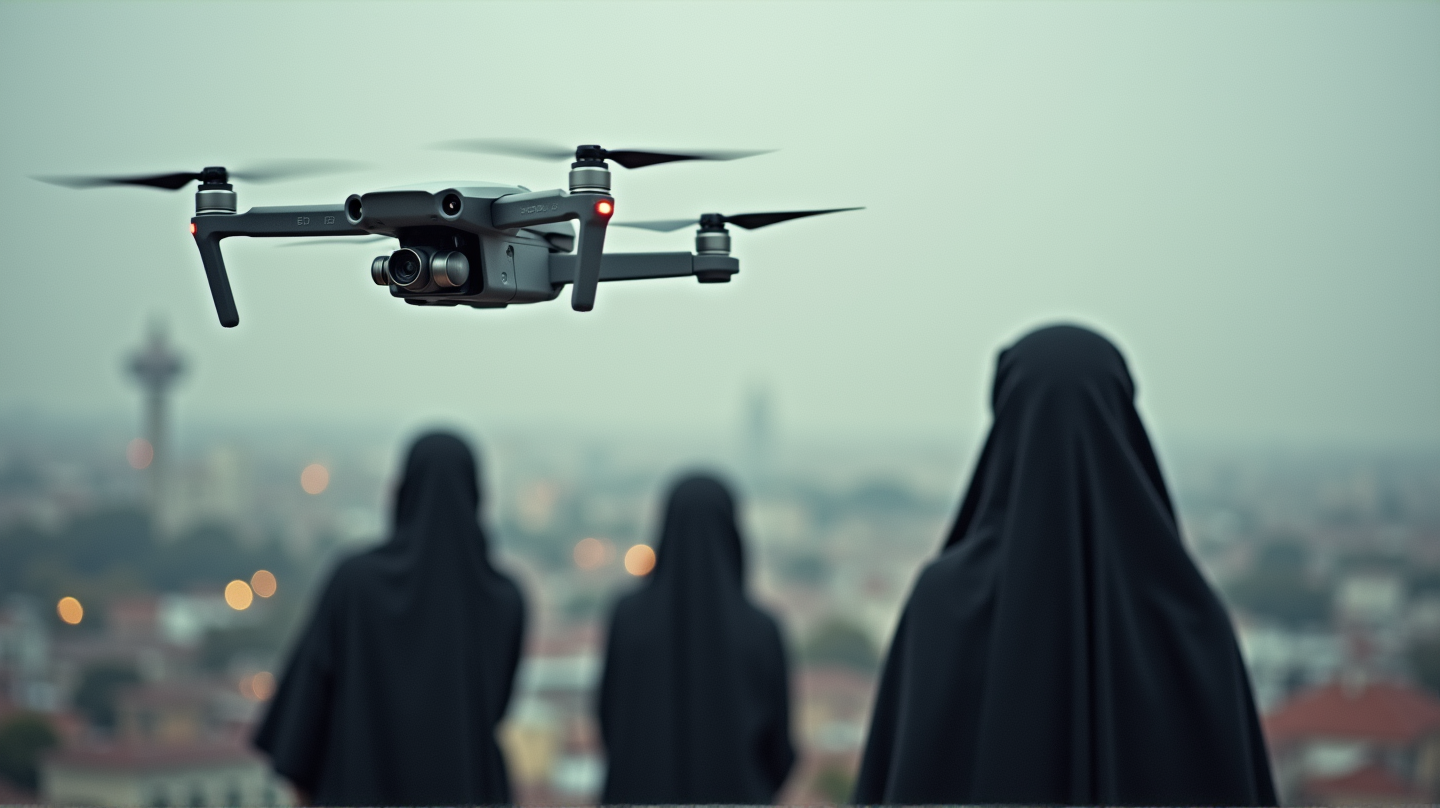Unveiling the Surveillance Network
The Iranian government has taken a high-tech approach to enforce mandatory hijab laws by deploying drones and digital tracking tools. This innovative yet concerning development highlights the lengths to which the regime will go to restrict the freedoms of women and girls, as documented by a recent United Nations report.
Technological Enforcement
The UN report reveals that Iran’s authorities are leveraging technology not just in public spaces but online as well. Women as young as 12 are required to wear a hijab across various platforms, with non-compliance carrying severe consequences, from hefty fines to long prison sentences, and even the possibility of facing the death penalty.
Global Reactions
This crackdown, described in the UN’s documentation, reflects Iran’s persistent efforts to silence dissent and impose strict dress codes. The international community, while keeping a close eye, continues to express growing concerns over human rights violations, particularly targeting women and girls who are at the forefront of the fight for equality.
Historical Context
This intensified surveillance strategy comes two years after the “Woman, Life, Freedom” movement was ignited in September 2022, following the tragic death of Mahsa Amini. Her passing under mysterious circumstances while in police custody has since become a symbol of resistance against oppressive laws.
Future Prospects
According to Straight Arrow News, the UN plans to present the full report to the Human Rights Council, bringing further attention to this violation of human rights. Sara Hossain, chair of the fact-finding mission, highlights the ongoing repression faced by those advocating for fundamental rights in Iran as deeply troubling.
Iranian Government’s Response
Despite international criticism, Iran has established facilities such as a “treatment clinic” for women who fail to adhere to hijab laws, reflecting their unwavering stance. However, recent comments from Iran’s new president, Masoud Pezeshkian, indicate some internal opposition to such draconian measures.
Conclusion
Iran’s utilization of drones and digital technology for enforcing hijab laws marks a significant and alarming development in the realm of surveillance and human rights. As the world watches closely, the hope remains for a future where human rights and freedom aren’t subjected to such invasive scrutiny.
